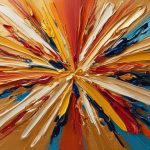The intersection of art and technology has transformed the way artists create, share, and experience their work. Digital tools have opened new possibilities, enabling artists to push creative boundaries, experiment with new forms of expression, and reach global audiences in ways that were unimaginable in previous eras. This blending of art and technology has resulted in an exciting evolution of creativity, shaping how we think about art in the 21st century.
Expanding the Creative Toolbox
One of the most significant impacts of technology on art is the expansion of the creative toolbox. Traditional mediums like painting, sculpture, and drawing now coexist with digital painting, 3D modeling, and animation. Programs like Adobe Photoshop, Illustrator, and Procreate allow artists to experiment with colors, textures, and compositions instantly. Digital art programs provide flexibility, enabling artists to make quick revisions, work across multiple layers, and explore styles that may be difficult or impossible to achieve with traditional methods.
Similarly, 3D modeling software like Blender and ZBrush has revolutionized sculpture and design. Artists can create virtual models with intricate details, visualize complex forms, and even produce physical sculptures using 3D printing technology. This blending of digital and physical art forms has expanded the possibilities for artists working in various disciplines.
New Forms of Art
Technology has also led to the creation of entirely new art forms. Digital and interactive installations, video art, and augmented reality (AR) experiences have become central to contemporary art. For instance, artists like teamLab have created immersive digital art installations where the viewer can interact with the artwork, experiencing it in real-time. These forms challenge the traditional notion of art as a static object, instead inviting viewers to become part of the creative process.
The rise of virtual reality (VR) has also enabled artists to create immersive worlds that viewers can explore. VR allows artists to push beyond the limits of physical space, creating surreal environments that challenge perception and reality. This technology has introduced a new dimension to storytelling in art, engaging viewers in multisensory experiences that are both participatory and deeply personal.
Art in the Digital Marketplace
Beyond creation, technology has reshaped how art is shared and sold. The rise of digital art platforms and marketplaces, such as Instagram, DeviantArt, and Behance, has allowed artists to showcase their work to a global audience without the need for gallery representation. Social media has democratized the art world, giving emerging artists a platform to build their own following and engage directly with their audience.
Non-fungible tokens (NFTs), blockchain-based digital assets, have also revolutionized the art market. Artists can now sell digital creations as unique, verifiable works of art, creating new revenue streams. This technology has particularly impacted digital artists, who previously faced challenges in selling and protecting their work in a digital format.
Conclusion
Technology has fundamentally changed the way we approach creativity, offering artists new tools, platforms, and opportunities. It has blurred the lines between traditional and digital mediums, opened doors for interactive and immersive experiences, and transformed the way art is bought and sold. As technology continues to evolve, it will undoubtedly shape the future of art, allowing for even more innovative and diverse forms of creative expression. The fusion of art and technology offers endless possibilities, fostering a new era of artistic exploration.
4o



